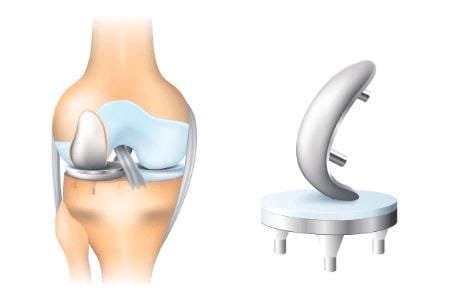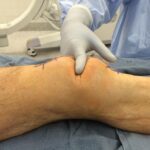Understand this alternative to a total knee replacement
Total knee replacement is among the most common surgeries performed in the United States. It’s done if you have severe osteoarthritis that can no longer be managed with nonsurgical treatment.
The surgery has a great track record for relieving pain and improving function. But it’s a major operation with a relatively long rehabilitation period. Some people with advanced knee osteoarthritis can get similar results with a faster recovery and other benefits by getting a partial knee replacement.
Partial knee replacement isn’t for everyone — and there are trade-offs. But for people who meet the criteria, there are advantages. For example, patients who get a partial knee replacement are more likely to feel like they have a normal knee.
Who’s a candidate for a partial knee replacement?
Osteoarthritis is caused by deterioration of cartilage in your joints. (Cartilage is the tough material that covers the ends of your bones, providing a smooth gliding surface.)
In the knee joint, where the thigh bone (femur) meets the shinbone (tibia), there are three places where bones make contact:
- On the inside (nearest the opposite knee, referred to as ‘medial’)
- On the outside (farthest from the opposite knee, referred to as ‘lateral’)
- The kneecap (patella).
To be eligible, you’ll also need sufficient range of motion and intact ligaments around your knee. Injury to the anterior cruciate ligament (your ACL, which is in the middle of your knee joint) is common, and it would disqualify you from having partial knee replacement.
How does a partial knee replacement work?
A partial knee replacement (aka a unicompartmental knee replacement) is similar to total knee replacement, except that the metal and plastic implant that replaces damaged bone and cartilage is placed only on the affected compartment. Most people with unicompartmental arthritis have it on the medial side.
Healthy cartilage, bone and ligaments are left alone. For this reason, most people report having a more natural-feeling knee. Rehab is quicker and easier than with total knee replacement (lasting about three weeks).
Because it’s a smaller operation, there’s less pain after surgery and lower risk for complications. Surgical risks include infection, blood loss, blood clots and injury to a blood vessel or nerve. These are rare, and they’re even less likely with partial than with total knee replacement.
People who get a partial knee replacement are often happier than those who get a total knee replacements.
Are there any disadvantages to a partial knee replacement?
The downside to partial knee replacement is that there’s a higher risk that it will have to be revised in the future to a total knee replacement. There are several reasons for this. Common ones include:
- Loosening of the implant.
- Infection.
- Arthritis developing in the other compartments.





